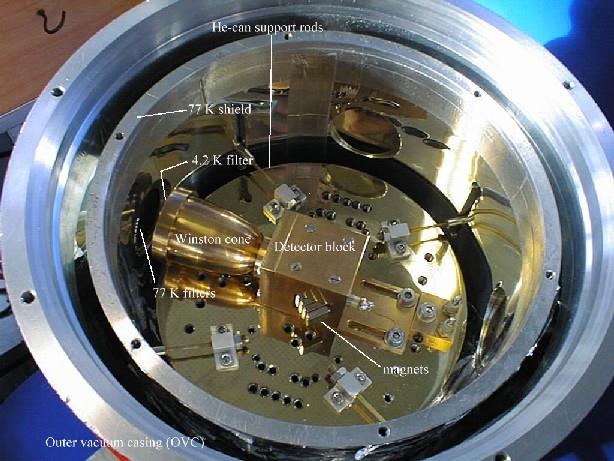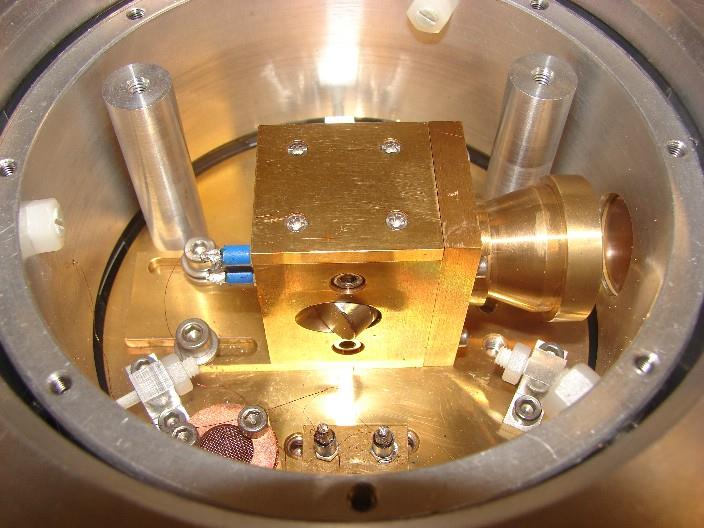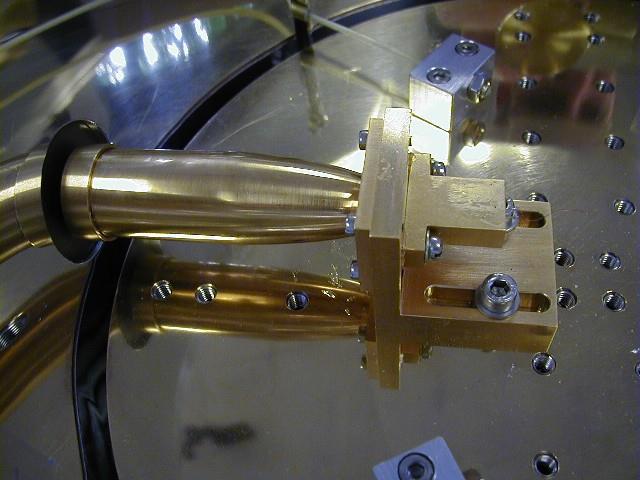Winston cones
Winston Cones, some examples of which are pictured below, are non-imaging light concentrating optical components designed to maximise the collection of radiation within a given field of view.
QMC Instruments Ltd offers three standard size cones which are specifically designed to suit our detector technology:
| Focal ratio | Entrance aperture | exit aperture | length between apertures | total length |
| f/2 | 23.8 mm | 5.5 mm | 41.4 mm | 51.5 mm [1] |
| f/3.5 | 14.8 mm | 2.2 mm | 40.0 mm | 42.0 mm [1] |
| f/4.5 | 10.0 mm | 1.1 mm | 50.0 mm | 51.0 mm [2] |
[1] Total length includes the filter retaining cap which fits over the entrance aperture and the mounting flange
[2] Total length includes the filter retaining cap but not the mounting flange
Other non-standard cones are often designed and built to suit the requirements of the user; please contact us to discuss your requirements.

An f/2 Winston Cone is the light collecting optic used on a magnetically tuned InSb detector
Manufacture
So how do we make Winston Cones? They are actually quite complicated components to make because the equation that describes the shape of the internal light gathering surface is fourth order, which in this case means that trigonometric terms of the fourth order comprise the mathematical description of the surface. However, with the CNC (Computer Numerical Control) milling machine, it is possible to accurately machine the mandrels, on to which are grown the cones, according to this equation. Once the mandrel has been machined, the copper body of the cone is grown from solution onto either a reusable stainless steel mandrel or sacrifical aluminium mandrel. Following growth of the cone a stainless steel mandrel is removed by pulling it out, or an aluminium madrel is dissolved.
The grown cone is then machined to give a nice outer finish, and cut at the appropriate lengths to give the required entrance and exit apertures. It is gold plated, and a gold coated copper flange for mounting is soldered on to the exit aperture end. We could leave the finished cone as copper without gold coating, however, while copper looks nice when newly produced, it does tarnish with age. Hence, to provide a easy-to-clean, long-lasting good-looking mirror finish, components are coated with a noble unreactive metal ... gold.

A short f/2 cone is used in the smaller TK1810 cryostat. Shortening increases the field of view

A standard f/3.5 cone

A non-standard cone
Edited May11